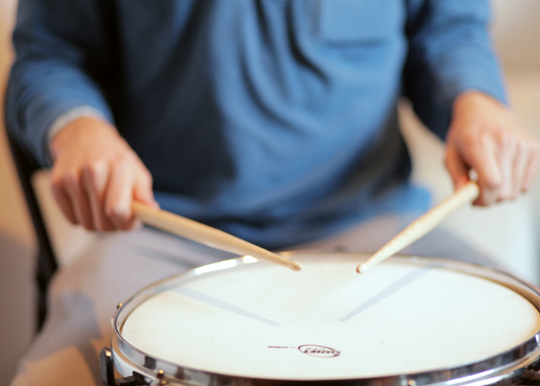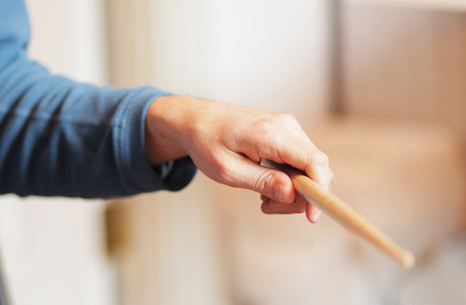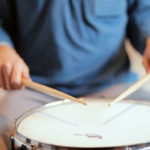
Drum Tutorials and Technique Discussions

Keeping in mind certain principles while exploring drum technique is key to avoiding injury and maximizing performance.
Basic Drum Stick Technique
Stay Loose, Avoid Injury, and Maximize Natural Motion with Rebound
Most drummers, beginners and experienced, struggle with stick technique. There are many different ways to hold the sticks and strike the drums. I’ve spent many years working on technique and have even had to relearn the fundamentals after a hand injury. Through these trials and tribulations, I discovered that there isn’t just one technique for holding the sticks. There are, however, certain principles that will make techniques more effective (and help you avoid injury): form should be comfortable and loose, motion should follow natural body motion, and technique should utilize the rebound of the drum or cymbal.
- Stay loose! No matter how you hold the sticks, you should never feel tense or stressed. I liken holding the sticks to holding a hammer and building a shed – If you grip the hammer too tightly, you probably won’t last a dozen or so nails. If you allow the hammer to do the work, you can swing that thing all day long. Drum instructors talk about the fulcrum of the stick. This is the area where the pad of your thumb and the first or second finger hold the stick. It should be around the bottom third of the drum stick. How you hold this point is dependent on your own physiology (more to come on this), and you should never grip tightly. The balance point should be relatively loose so you don’t create tension in your tendons.

5 Examples of Fulcrum Hand Positions – Students may prefer different grips based on their physiology.
- Embrace Natural Body Motions. Think of a hinge on a seesaw – The wrist is a hinge, and your technique should use that seesaw motion to your advantage (I like to play with my wrist relatively flat). Regardless of your preferred technique, the wrists should be loose and doing most of the work. A lot of people focus on using the fingers. Fingers are important to technique – they allow you to play at softer dynamics and get a lot of snap out of your sound. However, you can do all of those things with wrist motion. If you are using your fingers, just make sure they don’t impede the motion of the stick – You never want to create extra fulcrums with your fingers. Make sure your fingers are in a natural and relaxed position to avoid creating tension between the tendons on the top and bottom of your forearm. Such tension can lead to injury.

Find the balance point (fulcrum), but stay loose and relaxed – Find an interplay of rebound and natural motion
- Rebound is Everything. Sticks are designed to achieve maximum rebound. This is why sticks taper towards the end and have a defined tip. Likewise, drums and cymbals also have substantial rebound. The degree of rebound varies based on tuning and cymbal weight, but you must always use it to your advantage. If you strike a drum or cymbal and don’t feel the stick flying back at you, then you aren’t loose or aren’t holding the stick at it’s balance point. Stick rebound is like dribbling a ball – You should always feel the power of the stick coming back at you after you throw the stick down at the cymbal or drum.
Summary
Your technique will be influenced by the size of your hand and fingers and will not look exactly like others’. Regardless, it should still follow the above guidelines. Constantly check that you are tension free, using natural body motion, and using the rebound of the stick and the instrument. If you are struggling, try practicing in front of a mirror to monitor the fine points of your technique.



